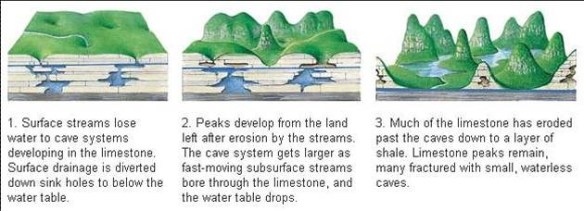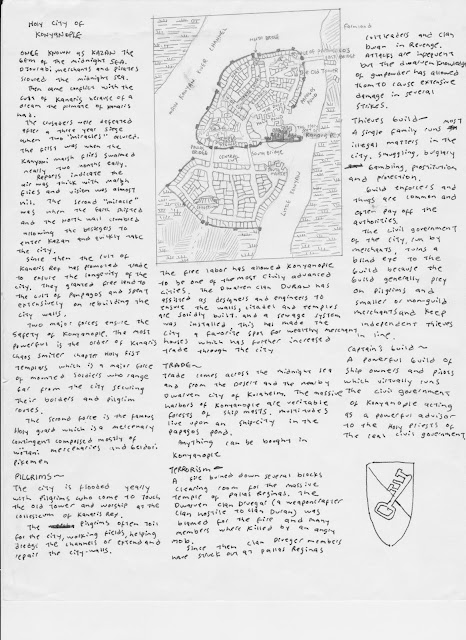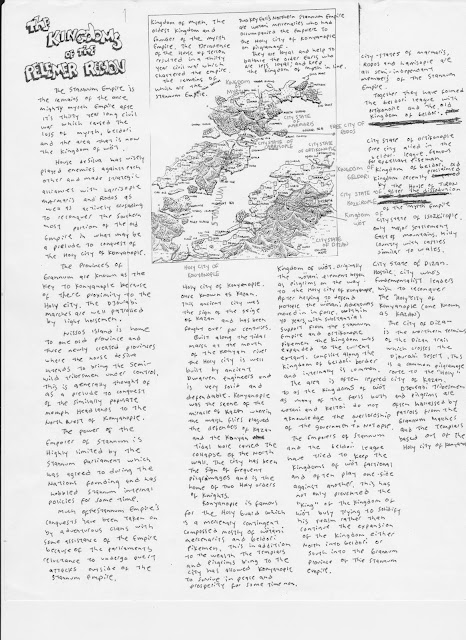The Gatefell Baths is a temple complex dedicated to Lustria the Goddess of Love. One of the few deities in the Old Faith that is known beyond the confines of Thule Island. Everyone loves the Priestesses of Lustria, well almost everyone. The Clerics of Lough (Reformed) are a bit prudish and generally religiously intolerant and have tried to shut down the temple on more than one occasion.

Four or five years ago the High Priestess of Lustria befriended the Church of Lough Order of the Sisters of the White Shield (providing free services at the complex). She agreed to allow the Sisters of the White Shield to enjoy the baths and other treatment in exchange for keeping their main order from shutting down the complex. Since then more than a few male Templars have also discovered the joys of a hot bath and treatments at the Gatefell complex and Lustra Priestesses have become so popular the Templars have practically rebranded Lustria as a Saint of Lough
The complex is atop a mountain escarpment. There are five thousand steps to get to the top. Most people ride in one of the mule caravans as horses are uncomfortable on the thin path. The complex is overflowing with flowers and lush plants provided by Lough worshipers who are unable to donate to the temple.
How the Baths Work
 |
A cut-away of a bath. Note there would typically be a wall
between the bather and the fire which retains the water. |
The temple is famous for its hot and cold baths, steam baths, private pools, but mostly the personal attention from the Priestesses (and a few Priests) on staff. The baths have been called a man-made wonder of the world.
Most of the baths are built with a chamber beneath that allows for temperature controlled air to heat or cool the water. In order to cool, there is a shaft down deep into the limestone which provides natural chilly air. For the heat roaring fires are provided.
Gatefell Callouts
[A1] Caldarium - This room pair of rooms is heated using a furnace in the floor below. The room to the West is the steam room. This room has a lewd statue of Lustria and benches along the edges. The Eastern room has a very hot pool.
[A2] Frigidarium - This room is cooled by a shaft down into the limestone that naturally produces a 60 degree airflow that is further chilled by storing ice in the shaft during the winter. The constant cold air reduces the temperature in the frigidarium pool to uncomfortable levels.
[A3] Tepidarium - This pair of rooms is kept at a very comfortable temperature. The room to the Eest is the contemplation room. This room has a conservative statue of Lustria, plants and flowers everywhere, and lounge chairs for relaxing. The Eastern room has a nice temperature pool.
[A4] Bathing and changing rooms. The priestesses of Lustria provide sponge baths to worshipers in these rooms, removing dirt and grime before worshipers enter and otherwise pollute the pools.
[A5] Kitchen and restooms. The kitchen is on the West side, a pantry and supplies in the center, and restrooms on the East.
[A6] Living area and hospital. The long North/South room is the hospital. Unlike a modern hospital this one is simply beds for patients. The other rooms are for guests. The Priestess live on the floor below.
 |
| I really need to make the map bigger and more detailed |








































